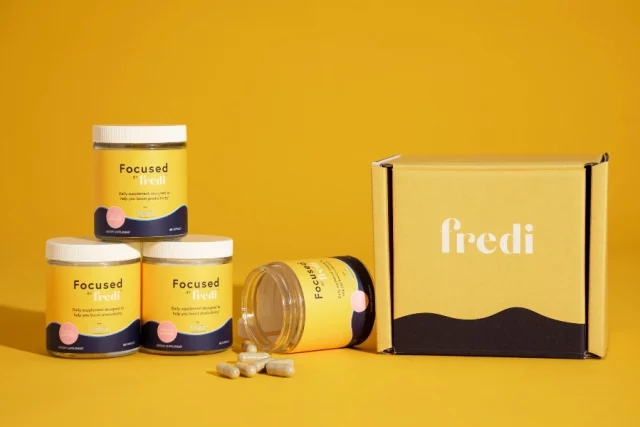Packaging is often the first thing consumers see when considering a purchase. It can be the deciding factor in whether or not someone buys a product. That’s why it’s so important to get product packaging right. In this blog post, we will discuss why packaging is so important and give you tips on how to design your packaging to increase sales. Let’s get to the details.
What Is Product Packaging?
Product packaging is the process of packaging a product for sale. This includes the materials used to package the product, the packaging design, and how the product is packaged. As highlighted by the team behind Valdamark, there are many materials and equipment used in product packaging, from stretch film and pallets to box sealers and tapered plugs. The package is meant to protect the product, but it must be eye-catching and easy to open.
If you are in the production business, you know that product packaging is not just a one-time event. It’s an ongoing process that needs to be well managed to ensure your products reach consumers in good condition. It is sometimes important to work with experts to get it right.
Why Is Product Packaging So Important?
There are many reasons why product packaging is so important. We will discuss some of the most important ones below.
Protects the Product
This is the most obvious reason why product packaging is so important. The package protects the product from damage during shipping and handling. It also keeps the product clean and safe from contamination. For instance, milk is usually packaged in containers that protect it from light and air. This helps to keep the milk fresh for a longer period of time.
Makes the Product Stand Out
In a world with so many products competing for attention, product packaging can make all the difference. Good packaging design will make your product stand out on store shelves and online. It will also make it easy for consumers to find your product when they are searching for it. So, if you need your product to sell, ensure the packaging is eye-catching and easy to spot.
Builds Brand Recognition
Your product packaging is a great way to build brand recognition. Using your brand colors, logo, and other branding elements on your packaging makes your product more recognizable to consumers. This will help them remember your product and choose it over similar products.
Safety and Compliance
Some products, such as food and pharmaceuticals, must meet certain safety and compliance standards. The packaging for these products must be designed to meet these standards. This helps to protect consumers and ensure they are getting a safe product. Besides this, it keeps people from getting sick and suing you.
Usability
Your product packaging should be easy for consumers to use. For instance, in food packing, if you are packaging a food product, the package should be easy to open and reseal. If you are packaging a beauty product, the package should be easy to open and close. Consider how your customers will use your product and design the packaging accordingly.
Sustainability
More and more consumers are looking for sustainable packaging options. They want packaging that is recyclable, compostable, or made from recycled materials. If you offer sustainable packaging options, you will appeal to these consumers. Besides this, the packaging ensures your products don’t get damaged or lost in transit, which reduces food waste.
As you can see, there are many reasons why product packaging is so important. It’s not just about protecting the product; it’s about making it stand out, building brand recognition, ensuring safety and compliance, and making the product easy to use. When done right, product packaging can help you sell more products and reduce food waste.
How To Get Product Packaging Right
There are many factors to consider when designing your product packaging. These include material selection, design, and printing. We will discuss each of these factors in more detail below.
Material Selection
The material you use for your packaging will depend on the type of product you are packaging. For instance, food products need to be packaged in food-grade materials that won’t contaminate the food. Beauty products must be packaged in materials that won’t react with the product. You will also need to consider the weight and fragility of your product when selecting packaging materials.
Design
Your packaging design should be eye-catching and easy to understand. It should also be easy to open and close. The design should also meet any safety and compliance standards that apply to your product.
Printing
Your packaging must be printed with brand colors, logo, and other branding elements. You will also need to include any information that is required by law, such as nutrition facts or ingredient lists. Be sure to proofread the packaging before it goes to print to avoid any mistakes.
Brand Consistently
It’s important to be consistent with your branding across your packaging. This will make your product more recognizable to consumers and help build brand recognition. For instance, if you typically use a certain color scheme for your packaging, stick with that color scheme. Don’t try to be too creative with your packaging; just use colors and designs that are consistent with your brand.
Tips To Consider When Designing Your Packaging
There are many factors to consider when designing your product packaging. Here are a few tips to keep in mind:
- Keep it simple: Don’t try to be too creative with your packaging. Just use colors and designs that are consistent with your brand.
- Be consistent: Use the same colors, designs, and branding elements on all of your packaging. This will make your product more recognizable to consumers.
- Include all required information: Be sure to include any information that is required by law, such as nutrition facts or ingredient lists.
- Proofread before printing: Proofread the packaging before it goes to print to avoid any mistakes.
- Consider sustainability: Ensure to offer sustainable packaging options to appeal to more consumers. By following these tips, you can design packaging that is both eye-catching and compliant with all regulations.
As you can see, product packaging is important for many reasons. It can help you sell more products and reduce food waste. When designing your packaging, be sure to keep it simple, be consistent with your branding, and include all required information. Proofread the packaging before it goes to print to avoid any mistakes. And finally, consider offering sustainable packaging options to appeal to more consumers. By following these tips, you can design effective and compliant packaging with all regulations.














